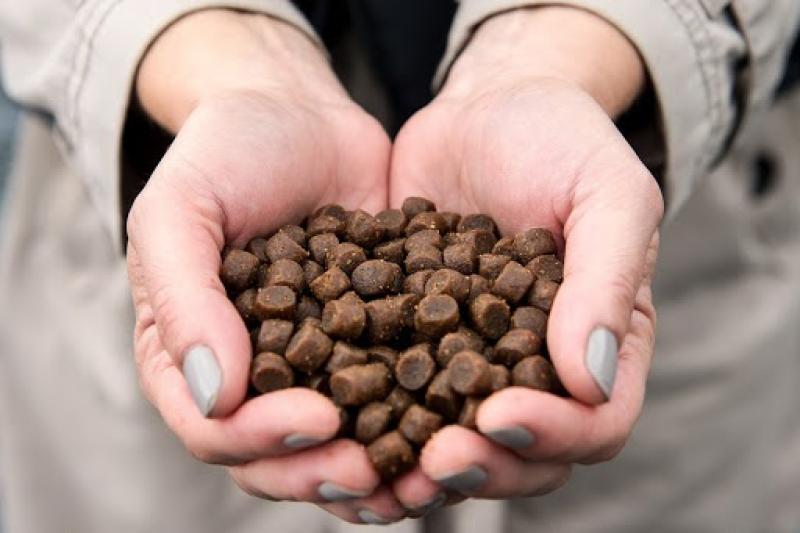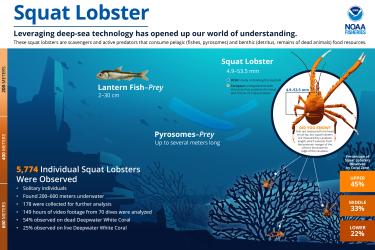Aquafeeds refer to any feed given to aquatic farmed animals as part of aquaculture. Fish (both farmed and wild) require a balanced mix of essential nutrients such as amino acids, fatty acids, and vitamins to thrive.
A key component of sustainable aquaculture is using feed ingredients that support sustainable growth of the aquaculture sector and preserve the unique combination of nutrients needed to sustain healthy fish and healthy people. With this in mind, scientific research has driven major improvements in the sustainability and efficiency of aquafeeds
1. The options for ingredients continue to expand and improve.
Traditionally, diets for carnivorous fish contained as much as 70% fishmeal and fish oil. These percentages have decreased significantly as alternative feed sources continue to be developed. Through research, scientists and fish farmers are learning that other combinations of ingredients can achieve the balance of the approximately 40 essential nutrients required by fish.
Current replacement options in commercial use include:
- meals and oils from plants
- fish processing trimmings
- yeast, insects, and other special meals
- proteins from corn, peas, and wheat
- oils from algae, canola, flaxseed, and soybean.
The inclusion of American soybeans and other grain crops, which are primarily sourced from non-coastal areas, improves the efficiency of aquafeeds and expands the economic opportunities for American farmers. In 2017, farmers grew 89 million acres of soybeans in the U.S., 80 percent of which became animal feed. The sourcing of these quality plant-based ingredients creates a connection between coastal states and the heartland, which drives domestic economic opportunities and sustainable feed alternatives.
How Technology and America’s Heartland Play Key Roles in a Healthy Seafood Diet
These improvements in processing and formulation of aquafeeds have resulted in farmed species that would typically be carnivores in the wild becoming increasingly omnivorous, and in some cases herbivores on farms. As researchers continue to improve feed sustainability and nutrition, the effective trophic level—essentially, their place in the food chain—for many farmed fish has gone down, and the efficiency of resource use has improved.
Key benefits of fish feed improvements and lower trophic levels include:
- A greater number of ingredients can be used in aquafeeds. This increases resilience and diversity of inputs, ultimately buffering against rapid changes in availability due to climate, markets, and technology.
- In general, the lower the trophic level of the feed ingredients, the more resource efficient fish farming becomes.
- Using advanced formulated feeds allows the inclusion of what otherwise might have been wasted. For example, leftover vegetative material from biofuel production.
2. Pairing taurine with plant-based proteins unlocks their aquafeed potential.
Taurine is an essential nutrient that carnivores need for fat digestion and eyesight. However, many fish cannot produce their own and must obtain it by eating forage fish. Taurine is not found in plants, but is abundant in animal tissues.
Pairing taurine with plant proteins completes the nutrient balance needed for healthy fish, making this feed nutritionally equivalent to animal proteins. This ingredient helps enable feed manufacturers to make high performance feeds for carnivores using only plant ingredients.
On average, using fish feed that includes taurine costs farmers less than half of what it costs to feed conventional fishmeal. Other countries, including those in the European Union and Canada, have included taurine in fish feeds for years. Based on numerous studies, including work from NOAA Fisheries, in 2017 the FDA approved the use of taurine for farmed fish feed in the United States. The addition of taurine puts U.S. farmers on a level playing field, and opens up more options for aquafeeds that are safe, good for the environment, and provide a cost savings that can be passed on to consumers
3. Trimmings can reduce the need to harvest fish for feeds.
Fish processing trimmings include heads, bones, and other fish parts that aren’t typically sent to market for human consumption. Fish trimmings allow feed manufacturers to reduce waste by using parts of the fish that might otherwise be thrown away. Incorporating trimmings into feeds also allows manufacturers to obtain fish oil and fish meal without harvesting additional wild fish.
For perspective, the Alaskan seafood industry harvests more than half of the total U.S. commercial fish catch each year. Turning this harvest into food for people leaves over 1.1 million tons of fish processing waste. A NOAA and USDA collaboration found that a quarter of this waste may be discarded and its potential nutritional and monetary value lost. Feed manufacturers can reclaim this value by using trimmings to create balanced aquafeeds.
Trimmings use can be a strategic ingredient that adds flavor to attract fish to aquafeeds. Although a 100 percent plant diet is possible for some species, the use of trimmings in feeds adds another alternative to the traditional wild-capture fish for feed production.
Fact Sheet: Alternative Feeds and Nutrition
Fact Sheet: Sustainable Aquaculture Feeds and Fish Nutrition
4. Sustainable feeds help maintain a nutritional balance for healthy fish and healthy people.
Seafood is dense with long-chain omega-3 fatty acids that are shown to have significant impacts on immunity, heart health, and brain function. Among other benefits, seafood contains all of the essential amino acids for human health, making it a complete protein source as well as a uniquely healthy fat source.
Through the control of aquafeed formulas, the omega-3 content of fish can be maintained to ensure healthy fish, ultimately to the benefit of consumers. Today, feeds manufacturers use fish oil, algae oil, or high omega-3 plant oil to ensure these important omega-3s are maintained in farmed fish.
Know Your Omega-3 Fatty AcidsEating foods that contain omega-3 fatty acids can reduce the risk of heart disease, fight autoimmune disease and inflammation, and support healthy brain function.
|
Two of the three long chain omega-3 acids important for human health are produced by marine algae (EPA and DHA). They are naturally found in seafood and nowhere else. These fatty acids are a large part of why the U.S. Dietary Guidelines recommend eating seafood at least two times a week to promote optimal health and wellness.
5. Improved feeding methods reduce impacts to the environment.
The total feed required to raise farmed fish is lower now than in past decades. This is due in part to alternative feeds, but also to technological advancements that allow farmers to adjust feeding practices to avoid feed waste. For example, in one experiment scientists used highly sensitive video equipment to monitor shrimp feeding behavior. In the past, the turbidity (cloudiness) of shrimp tank water would have prevented any observation. Salmon farmers are also employing underwater cameras that allow farmers to observe when fish feeding behavior has slowed and stop excess feed from entering the fish pens. This practice ensures fish are properly fed while little feed is wasted to the surrounding environment.
By avoiding excess feeding, aquaculture farmers can save money on feed and reduce impacts to the environment as a result of sediment from uneaten feeds building up under farm sites.
Innovation in aquafeeds marks a unique opportunity to grow American business, benefit public health, and improve food security in a changing climate. Researchers will continue to develop sustainable feeds to help fish farms meet the growing global seafood demand.

